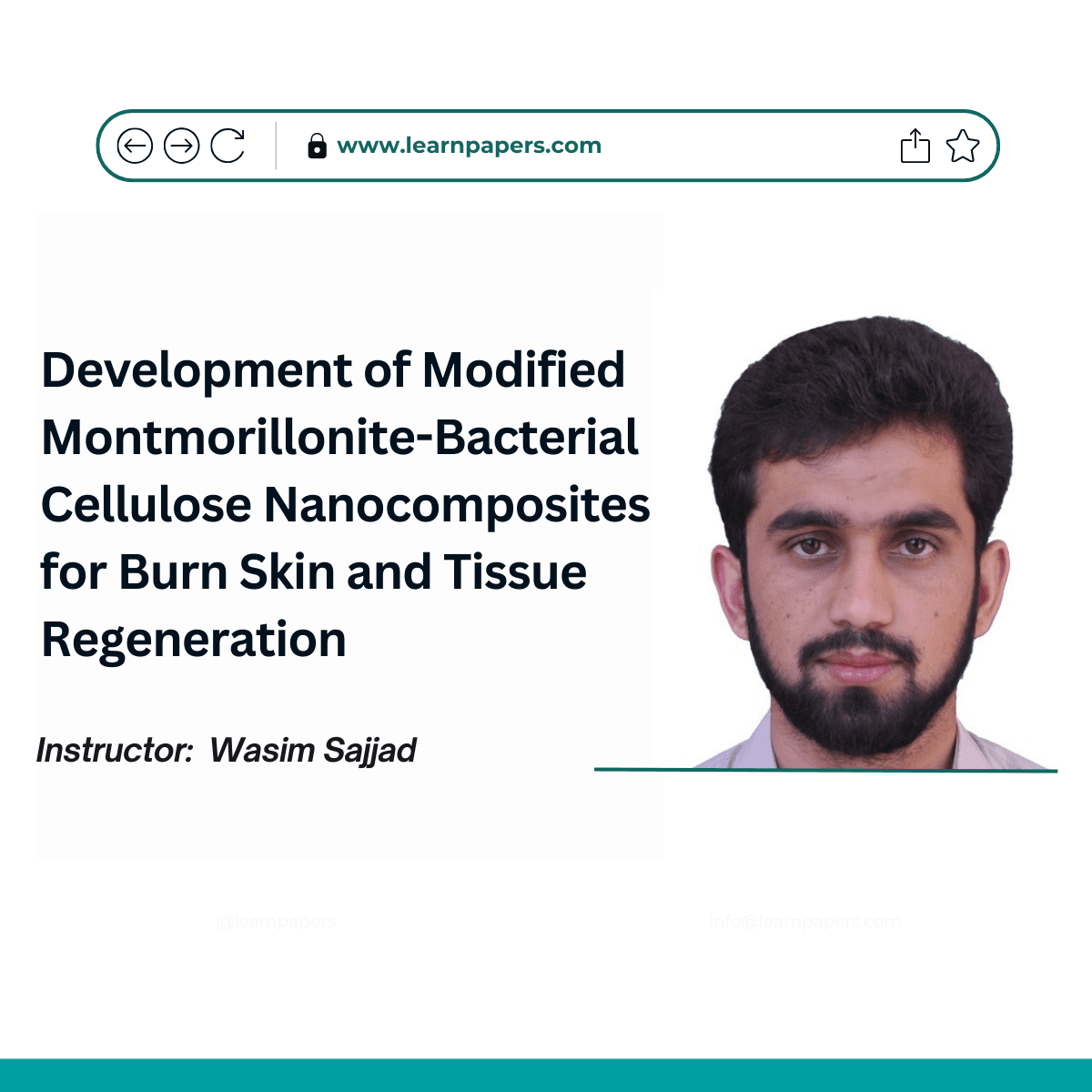Development of Modified Montmorillonite-Bacterial Cellulose Nanocomposites for Burn Skin and Tissue Regeneration

About Course
The Development of Modified Montmorillonite-Bacterial Cellulose Nanocomposites for Burn Skin and Tissue Regeneration course delves into the latest advancements in biomaterial-based wound healing solutions, focusing on the synergistic properties of bacterial cellulose (BC) and montmorillonite (MMT) nanocomposites. Burn injuries remain one of the most challenging medical conditions due to infection risks, delayed healing, and scarring, necessitating the development of biocompatible, antimicrobial, and regenerative materials for improved patient outcomes. In this course, learners will explore the biological and structural properties of BC, a naturally derived polymer with excellent moisture retention and mechanical strength, and how its integration with ion-modified MMT (Cu-MMT, Na-MMT, Ca-MMT) enhances its antibacterial and wound healing capabilities. Through an in-depth analysis of material synthesis, characterization techniques, and in vivo wound healing assessments, this course provides a comprehensive understanding of next-generation wound dressings in regenerative medicine.
Designed for biomedical engineers, material scientists, microbiologists, and healthcare researchers, this course covers the fabrication, functionalization, and biological evaluation of nanocomposite-based dressings. Learners will gain hands-on experience with advanced characterization techniques such as FE-SEM, FTIR, and XRD to analyze the morphology, chemical interactions, and crystallinity of MMT-BC composites. Additionally, the course provides insights into antimicrobial assessments using agar diffusion methods and explores the effectiveness of nanocomposites in burn wound healing using animal models. By the end of this course, learners will have the expertise to develop and assess biomaterial-based therapies for wound healing applications, making them well-equipped to contribute to advancements in nanomedicine, tissue engineering, and biopolymer-based healthcare solutions.
Abstract:
Bacterial cellulose (BC) is a promising biopolymer with wound healing and tissue regenerative properties but lack of antimicrobial property limits its biomedical applications. Therefore, current study was proposed to combine wound healing property of BC with antimicrobial activity of montmorillonite (MMT) and modified montmorillonites (Cu-MMT, Na-MMT and Ca-MMT) to design novel artificial substitute for burns. Designed nanocomposites were characterized through Fe-SEM, FTIR and XRD. The antimicrobial activities of composites were tested against Escherichia coli, Salmonella typhimurium, Citrobacter fruendii, Pseudomonas aeruginosa, Staphylococcus aureus and Methicillin-resistant Staphylococcus aureus. Tissue regeneration and wound healing activities of the composites were assessed in burn mice model. Physico-chemical characterization confirmed the loading of MMT onto surface and BC matrix. Modified MMTs-BC nanocomposites showed clear inhibitory zone against the tested pathogens. Animals treated with modified MMTs-BC nanocomposites exhibited enhanced wound healing activity with tissue regeneration, reepithelialization, healthy granulation and vascularization. These findings demonstrated that modified MMTs-BC nanocomposites could be used as a novel artificial skin substitute for burn patients and scaffold for skin tissue engineering.
Link:
Course Content
Module 1: Introduction to Wound Healing and Tissue Regeneration
Module 2: Bacterial Cellulose as a Biopolymer for Biomedical Applications
Module 3: Montmorillonite (MMT) and its Biomedical Significance
Module 4: Synthesis and Characterization of MMT-BC Nanocomposites
Module 5: Antimicrobial Evaluation of MMT-BC Composites
Module 6: Burn Wound Healing Assessment Using Animal Models
Module 7: Future Applications of Nanocomposites in Tissue Engineering
Student Ratings & Reviews
